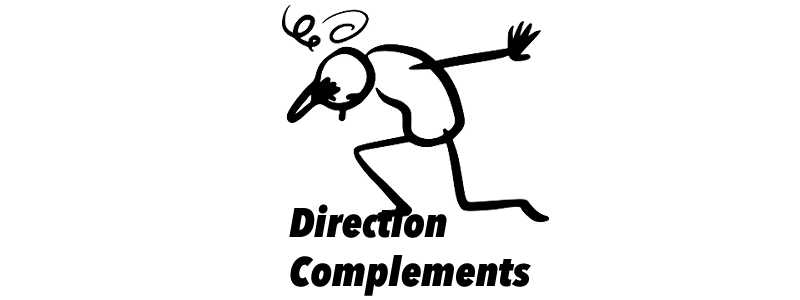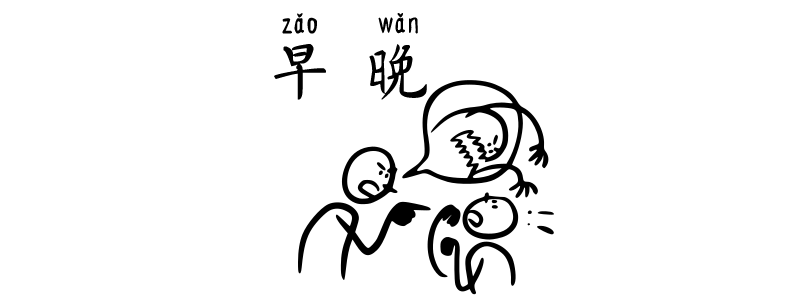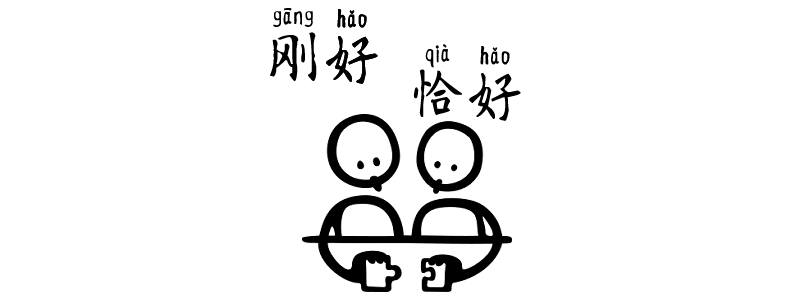Grammar Point:A direction complement is a complement used to describe the direction of a verb in Chinese. For example, the verb “走 zǒu” means “to walk”. However, to specify which direction you are walking in, you can add a direction complement to describe where you are walking to. For example, 走zǒu進jìn走zǒu进jìnWalk in 走zǒu出chū走zǒu出chūWalk out Now, let’s take a…
Author: tiffany
For a short while – 一时 yìshí
Grammar Point:一時时 yìshí refers to a short period of time, often meaning “at the moment,” “temporarily,” or “impulsively.” It’s commonly used to describe things that happen suddenly or only last for a brief time. Structure 一時时 yìshí + emotion or action This structure shows something done briefly or without long-term intent. 我wǒ是shì一時yìshí生氣shēngqì才cái說shuō那種nàzhǒng話huà的de我wǒ是shì一时yìshí生气shēngqì才cái说shuō那种nàzhǒng话huà的deI only said that because I…
Story About My Grandma – 2
Transcript 上次shàngcì不是búshì說shuō到dào我wǒ奶奶nǎinai被bèi賣mài給gěi了le我wǒ的de曾祖母zēngzǔmǔ嗎ma? 上次shàngcì不是búshì说shuō到dào我wǒ奶奶nǎinai被bèi卖mài给gěi了le我wǒ的de曾祖母zēngzǔmǔ吗ma? 根據gēnjù我wǒ奶奶nǎinai的de說法shuōfǎ, 她tā到dào5 歲suì以前yǐqián, 她tā都dōu過guò得de非常fēicháng幸福xìngfú根据gēnjù我wǒ奶奶nǎinai的de说法shuōfǎ, 她tā到dào5 岁suì以前yǐqián, 她tā都dōu过guò得de非常fēicháng幸福xìngfú 因為yīnwèi5 歲suì以前yǐqián, 她tā是shì我wǒ曾祖母zēngzǔmǔ家jiā唯一wéiyì的de孩子háizi, 所以suǒyǐ大家dàjiā非常fēicháng愛ài她tā因为yīnwèi5 岁suì以前yǐqián, 她tā是shì我wǒ曾祖母zēngzǔmǔ家jiā唯一wéiyì的de孩子háizi, 所以suǒyǐ大家dàjiā非常fēicháng爱ài她tā 然後ránhòu她tā的de原生yuánshēng家庭jiātíng, 她tā原本yuánběn的de爸爸bàba媽媽māma然后ránhòu她tā的de原生yuánshēng家庭jiātíng, 她tā原本yuánběn的de爸爸bàba妈妈māma 因為yīnwèi覺得juéde對不起duìbùqǐ她tā, 所以suǒyǐ每年měinián都dōu會huì買mǎi很hěn多duō的de禮物lǐwù, 好吃hǎochī的de東西dōngxī送sòng給gěi她tā因为yīnwèi觉得juéde对不起duìbuqǐ她tā, 所以suǒyǐ每年měinián都dōu会huì买mǎi很hěn多duō的de礼物lǐwù, 好吃hǎochī的de东西dōngxi送sòng给gěi她tā 那nà5 歲suì之後zhīhòu呢ne, 我wǒ的de曾祖母zēngzǔmǔ有yǒu了le她tā的de第一dìyī個ge孩子háizi, 那nà5 岁suì之后zhīhòu呢ne,,我wǒ的de曾祖母zēngzǔmǔ有yǒu了le她tā的de第一dìyī个ge孩子háizi, 接下來jiēxiàlái差不多chābùduō每měi一yì年nián兩liǎng年nián又yòu有yǒu第dì22個ge孩子háizi跟gēn第dì33個ge孩子háizi接下来jiēxiàlái差不多chàbùduō每měi一yì年nián两liǎng年nián又yòu有yǒu第dì22个ge孩子háizi跟gēn第dì33个ge孩子háizi 所以suǒyǐ我wǒ的de奶奶nǎinai一共yìgòng有yǒu3 個ge妹妹mèimei。 所以suǒyǐ我wǒ的de奶奶nǎinai一共yìgòng有yǒu3 个ge妹妹mèimei。 曾祖母zēngzǔmǔ其實qíshí也yě不是búshì有yǒu了le自己zìjǐ的de孩子háizi以後yǐhòu, 就jiù對duì我wǒ的de奶奶nǎinai很hěn不好bùhǎo。 曾祖母zēngzǔmǔ其实qíshí也yě不是búshì有yǒu了le自己zìjǐ的de孩子háizi以后yǐhòu, 就jiù对duì我wǒ的de奶奶nǎinai很hěn不好bùhǎo。 只是zhǐshì說shuō我wǒ奶奶nǎinǎai, 她tā就jiù不再búzài是shì家裡jiālǐ唯一wéiyì的de孩子háizi, 只是zhǐshì说shuō我wǒ奶奶nǎinai, 她tā就jiù不再búzài是shì家里jiālǐ唯一wéiyì的de孩子háizi, 所以suǒyǐ她tā覺得juéde心裡xīnlǐ很hěn不bù舒服shūfú, 跟gēn以前yǐqián比起來bǐqǐlái沒有méiyǒu那麼nàme多duō的de愛ài。 所以suǒyǐ她tā觉得juéde心里xīnlǐ很hěn不bù舒服shūfu, 跟gēn以前yǐqián比起来bǐqǐlái没有méiyǒu那么nàme多duō的de爱ài。 那nà再加上zàijiāshàng在zài那個nàge年代niándài, 通常tōngcháng姐姐jiějiě哥哥gēge的de責任zérèn就是jiùshì要yào照顧zhàogù弟弟dìdi妹妹mèimei。 那nà再加上zàijiāshàng在zài那个nàge年代niándài, 通常tōngcháng姐姐jiějiě哥哥gēge的de责任zérèn就是jiùshì要yào照顾zhàogù弟弟dìdi妹妹mèimei。 但dàn問題wèntí是shì我wǒ奶奶nǎinai的de3 個ge妹妹mèimei, 她們tāmen都dōu是shì非常fēicháng會huì惹麻煩rěmáfán的de人rén。 但dàn问题wèntí是shì我wǒ奶奶nǎinai的de3…
Sooner or later – 早晚 zǎowǎn
Grammar Point:The Chinese word 早晚 zǎowǎn literally means “morning and evening”, but it’s commonly used as an adverb to mean “sooner or later.” That is, something is bound to happen eventually, though the exact time is uncertain. Structure 早晚 zǎowǎn + Verb Phrase It can be used to soften the tone when talking about something difficult, like giving bad news or encouragement. 這zhè種zhǒng亂luàn花錢huāqián的de習慣xíguàn, 早晚zǎowǎn會huì出問題chūwèntí这zhè种zhǒng乱luàn花钱huāqián的de习惯xíguàn,…
“Always” in Chinese 3 – 时时 shíshí
Grammar Point:The Chinese word 時時时时 shíshí means “constantly” or “all the time.” It is an adverb used to describe actions or states that happen frequently or continuously. Structure 時時时时 shíshí + Verb / Verb Phrase The word 時時时时 shíshí is not typically used in daily conversation. It is more formal or poetic, often appearing in literature, speeches, or writing with a more elegant…
Story About My Grandma – 1
Transcript 哎ei, 其實qíshí我wǒ最近zuìjìn才cái知道zhīdào我wǒ的de爸爸bàba的de媽媽māma的de媽媽māma家庭jiātíng其實qíshí跟gēn我wǒ沒有méiyǒu真的zhēnde關係guānxī。 哎ei, 其实qíshí我wǒ最近zuìjìn才cái知道zhīdào我wǒ的de爸爸bàba的de妈妈māma的de妈妈māma家庭jiātíng其实qíshí跟gēn我wǒ没有méiyǒu真的zhēnde关系guānxi。 在zài我wǒ爸爸bàba的de媽媽māma也yě就是jiùshì我wǒ奶奶nǎinai那個nàge年代niándài, 在zài我wǒ爸爸bàba的de妈妈māma也yě就是jiùshì我wǒ奶奶nǎinai那个nàge年代niándài, 因為yīnwèi臺灣人Táiwānrén的de生活shēnghuó非常fēicháng的de窮qióng, 所以suǒyǐ他們tāmen沒有méiyǒu錢qián。 因为yīnwèi台湾人Táiwānrén的de生活shēnghuó非常fēicháng的de穷qióng, 所以suǒyǐ他们tāmen没有méiyǒu钱qián。 如果rúguǒ你nǐ生shēng了le雙胞胎shuāngbāotāi, 就是jiùshì2 個ge孩子háizi一起yìqǐ出生chūshēng的話dehuà, 如果rúguǒ你nǐ生shēng了le双胞胎shuāngbāotāi, 就是jiùshì2 个ge孩子háizi一起yìqǐ出生chūshēng的话dehuà, 他們tāmen沒有méiyǒu錢qián照顧zhàogù2 個ge孩子háizi, 他們tāmen就jiù會huì把bǎ其中qízhōng一個yíge孩子háizi送sòng給gěi別人biérén或者huòzhě是shì賣mài給gěi別人biérén。 他们tāmen没有méiyǒu钱qián照顾zhàogù2 个ge孩子háizi, 他们tāmen就jiù会huì把bǎ其中qízhōng一个yíge孩子háizi送sòng给gěi别人biérén或者huòzhě是shì卖mài给gěi别人biérén。 那nà我wǒ奶奶nǎinai就是jiùshì那個nàge被bèi賣掉màidiào的de孩子háizi。 那nà我wǒ奶奶nǎinai就是jiùshì那个nàge被bèi卖掉màidiào的de孩子háizi。 那nà我wǒ的de曾祖母zēngzǔmǔ為什麼wèishénme要yào買mǎi我wǒ奶奶nǎinai呢ní? 那nà我wǒ的de曾祖母zēngzǔmǔ为什么wèishénme要yào买mǎi我wǒ奶奶nǎinai呢ní? 這zhè也yě是shì一個yíge那個nàge時候shíhòu社會shèhuì很hěn常見chángjiàn的de迷信míxìn。 这zhè也yě是shì一个yíge那个nàge时候shíhou社会shèhuì很hěn常见chángjiàn的de迷信míxìn。 所以suǒyǐ在zài她tā買mǎi我wǒ奶奶nǎinai以前yǐqián, 她tā懷孕huáiyùn很hěn多duō次cì, 可是kěshì每měi一yí次cì都dōu流產liúchǎn都dōu失敗shībài。 所以suǒyǐ在zài她tā买mǎi我wǒ奶奶nǎinai以前yǐqián, 她tā怀孕huáiyùn很hěn多duō次cì, 可是kěshì每měi一yí次cì都dōu流产liúchǎn都dōu失败shībài。 那個nàge時候shíhòu的de人rén相信xiāngxìn必須bìxū要yào打破dǎpò這個zhège不好bùhǎo的de循環xúnhuán, 那个nàge时候shíhou的de人rén相信xiāngxìn必须bìxū要yào打破dǎpò这个zhège不好bùhǎo的de循环xúnhuán, 所以suǒyǐ呢ne, 她tā就jiù買mǎi了le我wǒ奶奶nǎinai, 把bǎ她tā當成dāngchéng她tā的de自己zìjǐ的de第一個dìyīge孩子háizi, 所以suǒyǐ呢ne, 她tā就jiù买mǎi了le我wǒ奶奶nǎinai, 把bǎ她tā当成dāngchéng她tā的de自己zìjǐ的de第一个dìyīge孩子háizi, 所以suǒyǐ她tā就jiù有yǒu了le一個yíge好hǎo的de開始kāishǐ, 一個yíge第一個dìyīge孩子háizi。 所以suǒyǐ她tā就jiù有yǒu了le一个yíge好hǎo的de开始kāishǐ, 一个yíge第一个dìyīge孩子háizi。 以後yǐhòu呢ne, 她tā就jiù可以kěyǐ比較bǐjiào容易róngyì有yǒu自己zìjǐ第dì2 個ge第dì3 個ge孩子háizi。 以后yǐhòu呢ne, 她tā就jiù可以kěyǐ比较bǐjiào容易róngyì有yǒu自己zìjǐ第dì2 个ge第dì3 个ge孩子háizi。…
Synonym of “Almost” in Chinese
Grammar Point:Both 差不多 chābùduōchàbuduō and 幾几乎 jīhū can mean “almost” or “nearly” in English, but they are used differently in Chinese depending on context and sentence structure. Here’s a breakdown of the differences: Differences Feature 幾几乎 jīhū 差不多 chābùduōchàbuduō Meaning Almost, nearly Almost, roughly, about Sentence position Usually comes before a verb or verb phrase Can be an adverb,…
“Because” and “besides” – 因 yīn and 除 chú
Grammar Point:In casual Chinese, people often shorten 因為为 yīnwèi to 因 yīn and 除了 chúle to 除 chú. These abbreviations are common in speech and writing, especially online or in headlines. 因 yīn – because This is often used in more formal writing, headlines, or brief statements, especially when trying to be concise. 因yīn工作gōngzuò太tài忙máng, 我wǒ沒méi時間shíjiān運動yùndòng因yīn工作gōngzuò太tài忙máng, 我wǒ没méi时间shíjiān运动yùndòngBecause work is too busy, I don’t have time…
Contrary to Expectations – 偏 piān
Grammar Point:In Chinese, the word 偏 piān is often used to express a meaning similar to “contrary to expectations”, or “just (to do something) even though it’s not reasonable or expected.” It usually shows that someone does something deliberately, stubbornly, or despite objections or difficulties. Structure S + 偏 piān + V It adds emphasis, often implying that someone is going against advice,…
Just Right – 刚好 gānghǎo and 恰好 qiàhǎo
Grammar Point:In Chinese, both 剛刚好 gānghǎo and 恰好 qiàhǎo can mean “just right” or “happened to”, but they aren’t always interchangeable. The key difference lies in their tone, formality, and usage. Structure S + 剛刚好 gānghǎo + Verb Phrase 剛刚好 gānghǎo is more common in everyday conversation. It has a casual and natural tone, similar to saying “just right” or “just happened to” in a…








